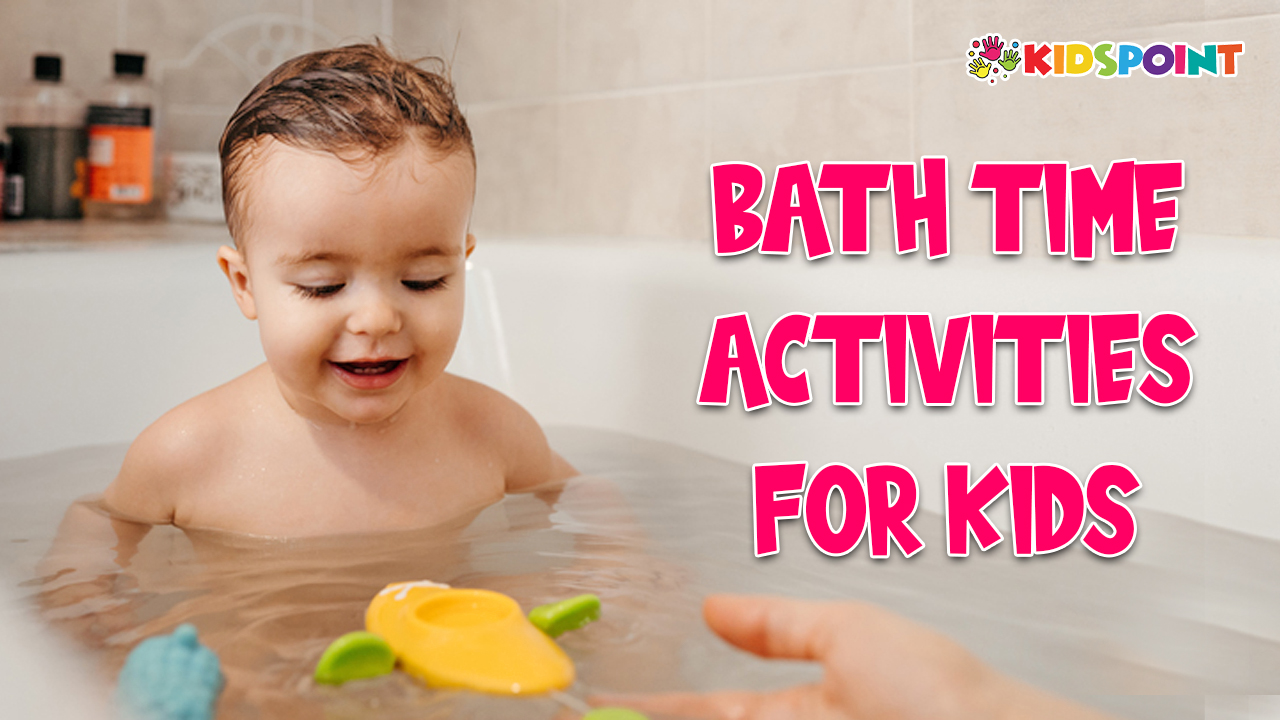Bath time is not just about getting clean; it’s also an opportunity for kids to engage in fun and educational activities. From sensory play to science experiments, there are countless ways to make bath time both enjoyable and enriching for children. In this comprehensive guide brought to you by The Kids Point, we’ll explore a variety of bath time activities designed to stimulate young minds while they splash and play.
Sensory Play
- Sensory activities are a fantastic way to engage children’s senses and promote cognitive development. In the bath, you can incorporate various materials to create sensory experiences.
- Add bath bombs or bath fizzies to introduce color and fragrance to the water.
- Include bath toys with different textures, such as rubber ducks, sponges, or foam letters.
- Encourage exploration by providing cups, sieves, and containers for pouring and scooping water.
- Use waterproof books with textured pages or bath crayons for drawing on the bathtub walls.
STEM (Science, Technology, Engineering, and Mathematics) Activities
- Bath time provides an excellent opportunity to introduce basic STEM concepts through hands-on experiments.
- Conduct simple sink or float experiments by gathering objects of varying densities and observing whether they float or sink in the water.
- Explore the principles of buoyancy by experimenting with different shapes and sizes of objects.
- Teach kids about water displacement by showing how the water level rises when objects are placed in the bath.
- Create homemade bath bombs together and discuss the chemical reactions that occur when they fizz in the water.
Language and Literacy
- Turn bath time into a language-rich environment by incorporating storytelling, rhymes, and vocabulary building activities.
- Read waterproof books aloud while your child plays in the bath, encouraging them to follow along and interact with the story.
- Sing songs and nursery rhymes related to water, such as “Row, Row, Row Your Boat” or “Five Little Ducks.”
- Use bath time as an opportunity to introduce new vocabulary words related to hygiene, body parts, and water-related concepts.
Fine Motor Skills Development
- Bath time activities can help children improve their fine motor skills through activities that involve hand-eye coordination and dexterity.
- Provide bath toys that require squeezing, grasping, and manipulating, such as squirt toys or water wheels.
- Encourage your child to practice pouring water from one container to another, using cups of different sizes.
- Offer bath time puzzles or foam shapes that can be stuck to the bathtub walls, promoting finger dexterity and problem-solving skills.
Creative Expression
- Bath time is an ideal setting for fostering creativity and imagination through artistic expression.
- Let your child express themselves through bath crayons, allowing them to draw pictures or write messages on the bathtub walls.
- Use foam letters or numbers to encourage letter and number recognition while your child spells out words or counts objects in the bath.
- Provide molds and sculpting tools for molding shapes and creatures out of bath foam or playdough.
Relaxation and Sensory Regulation
- For some children, bath time can serve as a calming and sensory-regulating activity, particularly if they have sensory processing challenges.
- Add calming essential oils such as lavender or chamomile to the bathwater to promote relaxation.
- Use gentle underwater lighting or waterproof LED candles to create a soothing ambiance.
- Play soft music or white noise in the background to help your child unwind and relax during bath time.
Safety Considerations
- While bath time can be a fun and educational experience, it’s essential to prioritize safety to prevent accidents and injuries.
- Always supervise children closely during bath time, never leaving them unattended in the bathtub.
- Ensure that the water temperature is safe and comfortable for your child, using a thermometer to regulate the temperature if necessary.
- Be cautious of small bath toys or objects that could pose a choking hazard for young children.
- Teach children about water safety rules, such as not standing up or running in the bathtub, and how to call for help if needed.
Bath time offers a wealth of opportunities for children to engage in fun and educational activities that promote learning and development. By incorporating products and resources from The Kids Point into your child’s bath time routine, you can turn a daily hygiene task into a valuable learning experience that stimulates their minds and enhances their overall well-being.


